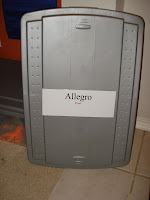Teaching Tempo Marks: Snow Ball "Fight"

Happy Holidays everyone! I hope that you are having a wonderful time with family and friends. I received some pretty awesome gifts for Christmas this year including a few items that I'll be incorporating into my future lessons so stay tuned for some wacky ideas, games, and activities in the new year! Are a few of your students having a little difficulty remembering the meanings of different tempo marks such as Adagio, Allegro, and Andante? Throwing "snowballs" at varying tempos really helps my students remember which is which. It's especially easy to get the "A" words mixed up when first learning them so I thought up this idea of us throwing "snowballs" at each other based on which tempo mark I call out. It's a great way to help teach and reinforce the different tempo marks. This is the perfect time of year to have an indoor "snowball fight' with your students using small styrofoam balls (about 2-21/2" in diameter) and ...











